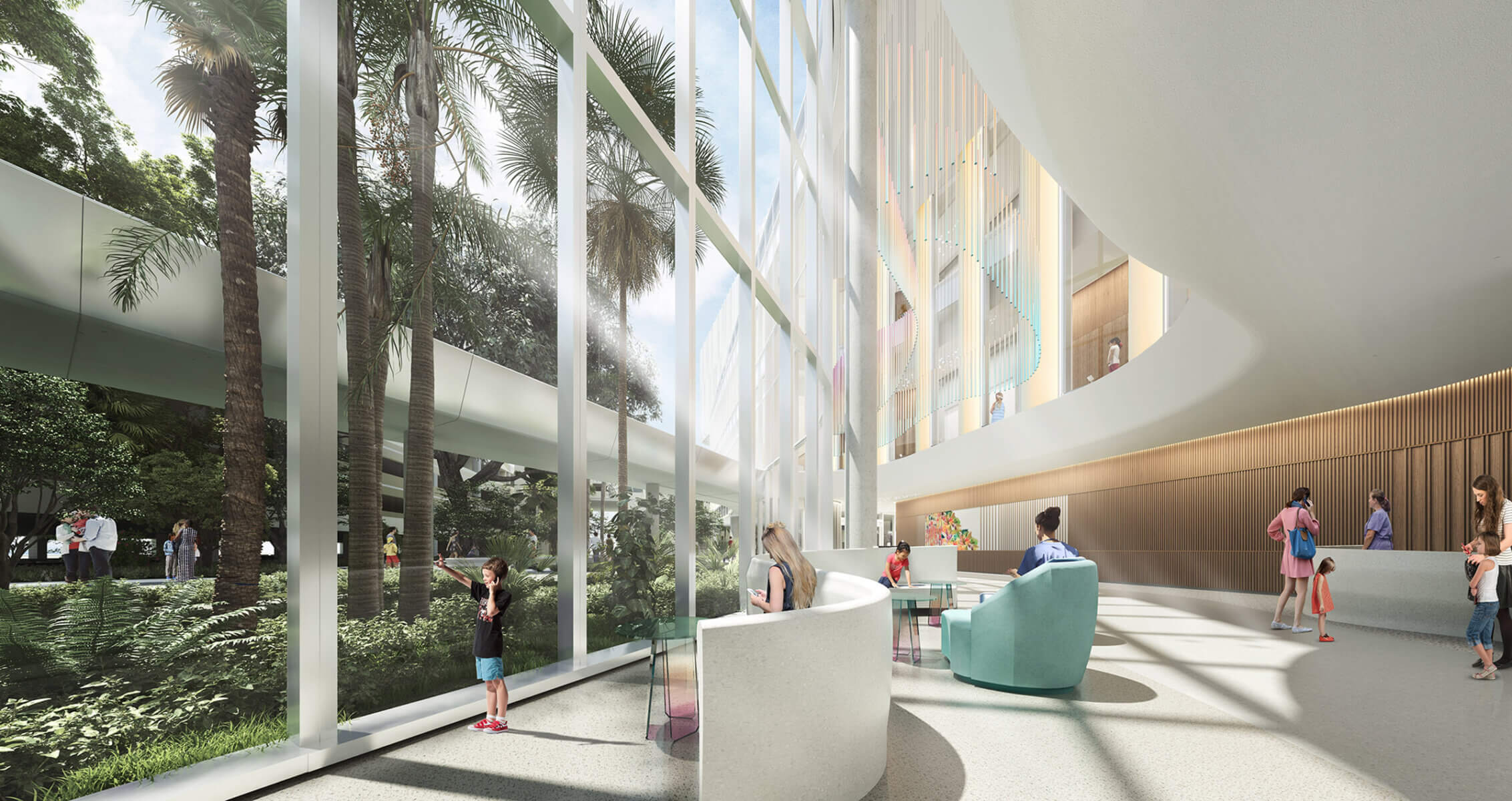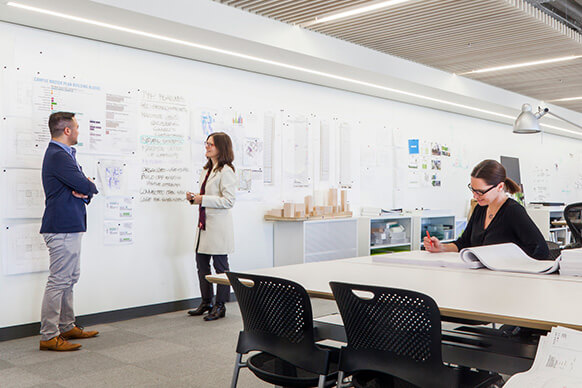A new operational model for pediatric surgery
Nicklaus Children’s Hospital offers a full complement of pediatric health services and is south Florida’s only free-standing, licensed specialty hospital exclusively for children. When the master plan called for relocating surgery to the center of campus and modernizing operating suites, Nicklaus Children’s engaged us to work with their team to develop a new operational model for the surgical environment.
Although the hospital’s existing operating rooms were too small to accommodate the latest equipment and surgical teams, staff liked the fact that they were all on one level. But there was no room on the landlocked campus for a sprawling, single-story structure. Stacking was the only realistic option, and teams would need to participate in intensive process mapping sessions to develop a new model.
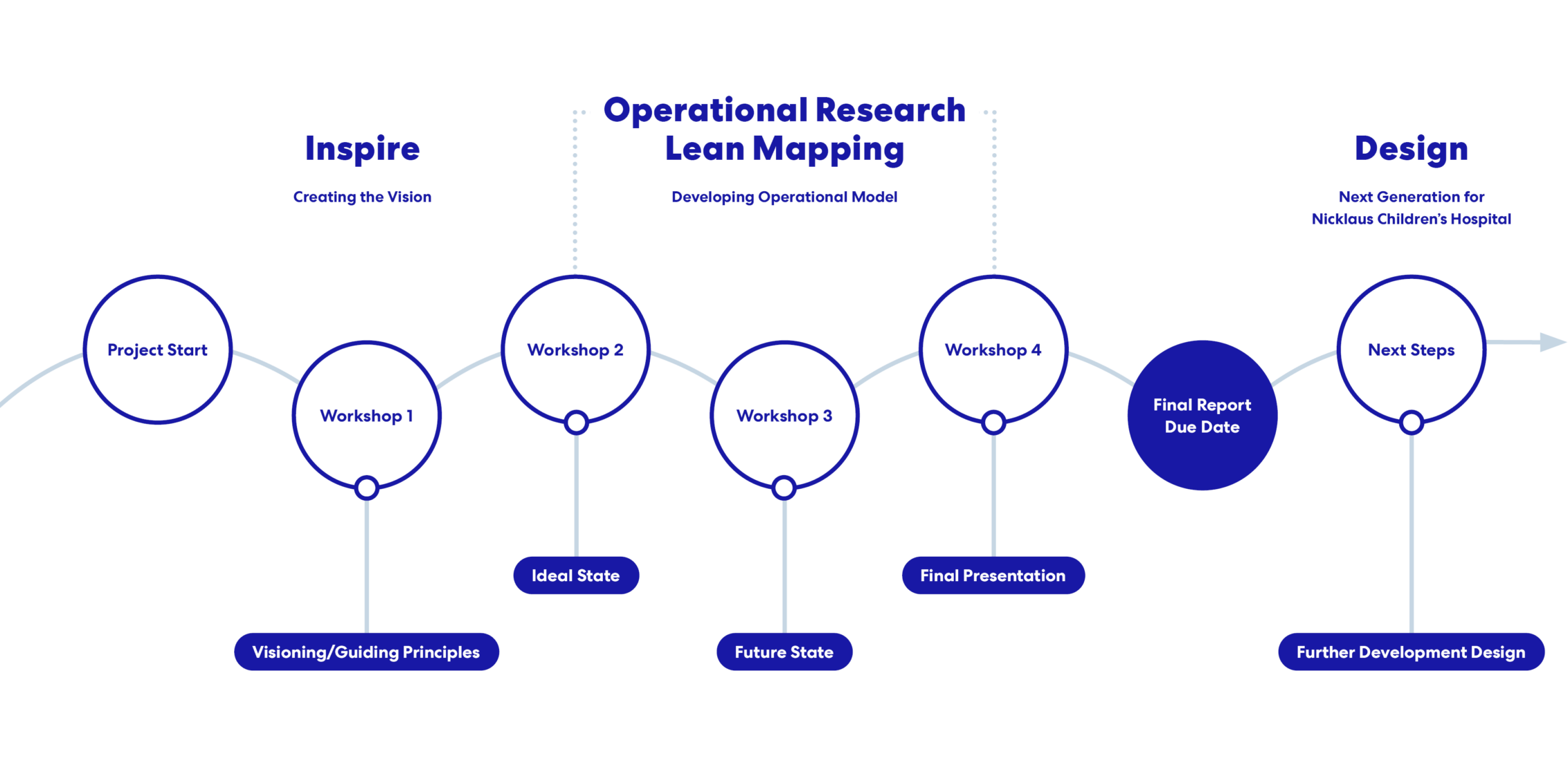
The process began with a visioning session with executive leadership. Participants agreed on four guiding principles, and these principles served as a north star when questions arose later in the process.
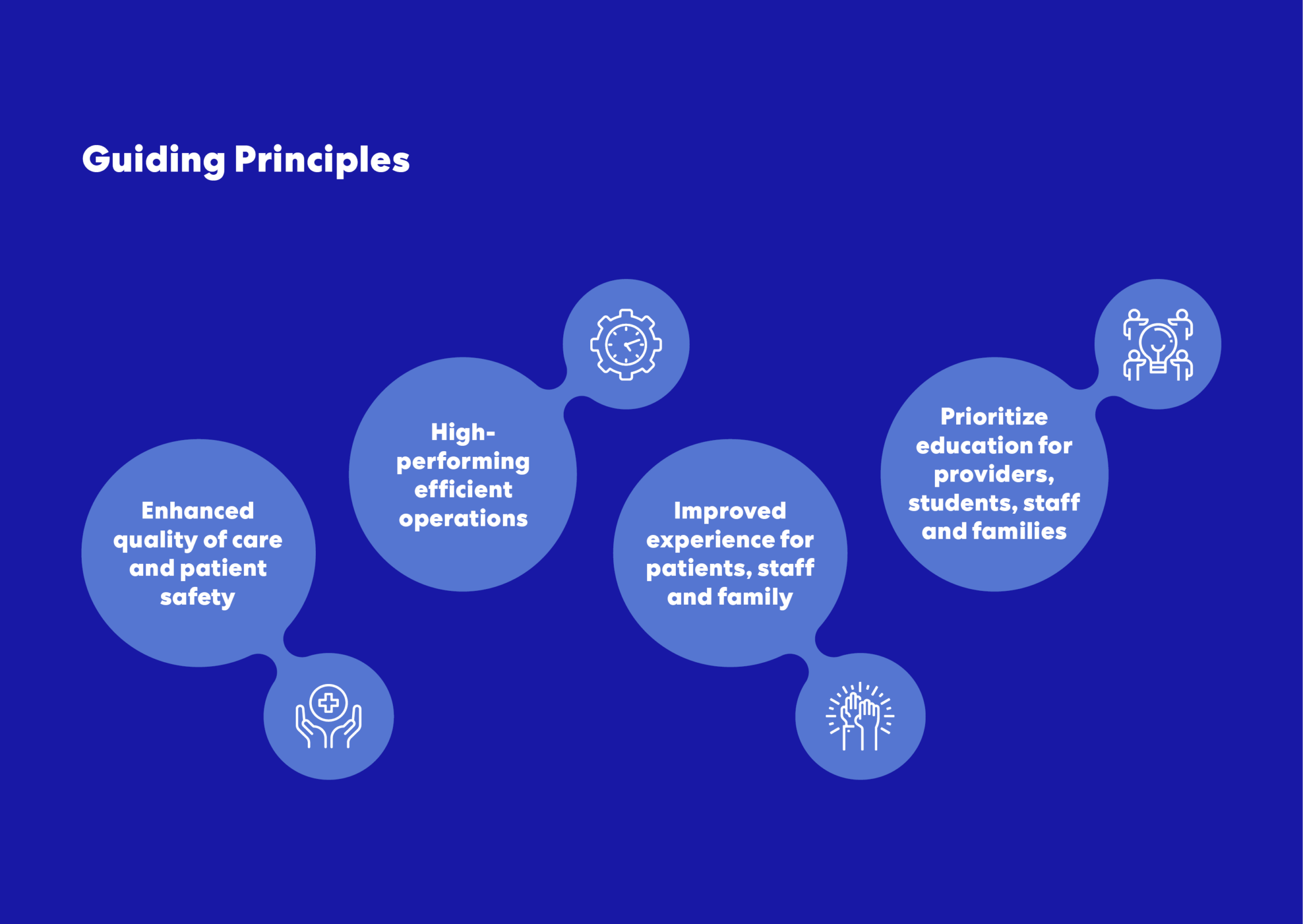
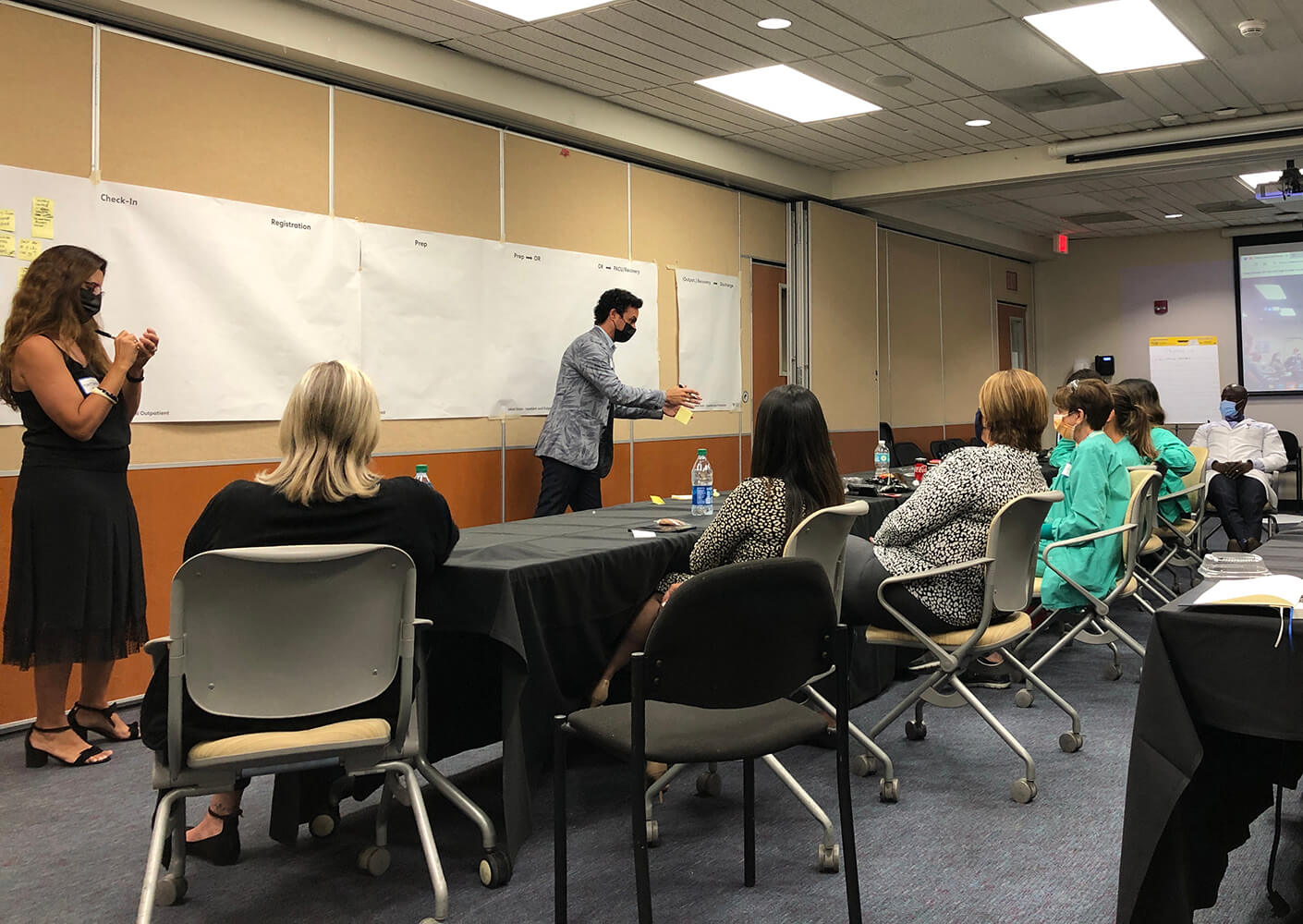
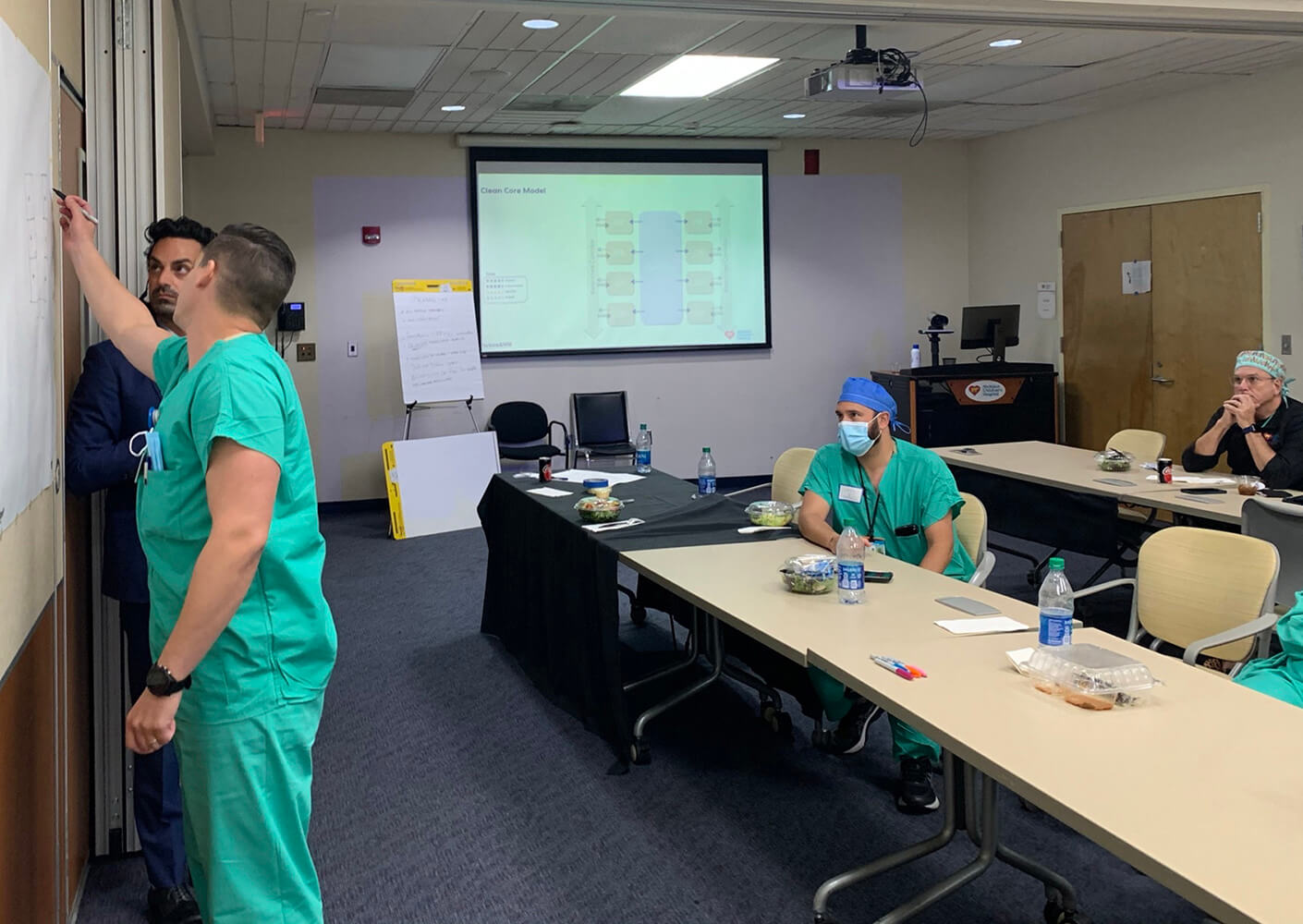
We then held a series of workshops with care teams to discuss ideal flows across three crucial aspects of the new space: the inpatient-outpatient experience, the staff experience, and the sterile core. The goal was to arrive at an ideal state of flows of staff, materials, and supplies through the core. Because Nicklaus Children’s did not have a core model in its existing surgical care center, we initiated discussion by presenting trends and best practices from around the country.
- An understanding and consensus regarding sterile processing support with vertical adjacencies
- An operational model for the clean core
- Improved infection protocols
- Commitment to universal rooms and cross-trained staff to minimize room transfers and provide care for prep, PACU, and recovery
- Improved registration process and technology to streamline communications from pre-registration through discharge
A clear set of operational decisions were in place at the conclusion of the process. With the goal of improving the experience for patients, their families, and staff, the team established a clear vision for the continuum of care, from surgery registration to recovery and discharge; an understanding and consensus among staff for a multi-level surgical platform; and a clean core operational model.
The process formed the basis of the new surgical tower’s design. It will consist of state-of-the-art operating suites and spacious, private post-surgical care spaces. We were selected to design the five-story tower and delivery is expected in fall 2024.
“The Griffin Surgical Tower is quickly coming to fruition, and it is exciting for the entire organization to see the transformation from two-dimensional plans to the impressive structure on our campus,” says Jose E. Perdomo, senior vice president of administration and special projects. “As the surgical teams walk through the building, they are envisioning the workflows and operational decisions that were the basis of the design and are eager to move to the next step, actually providing care to our patients and families.”
― Jose E. Perdomo, Senior Vice President, Administration/Special Projects

